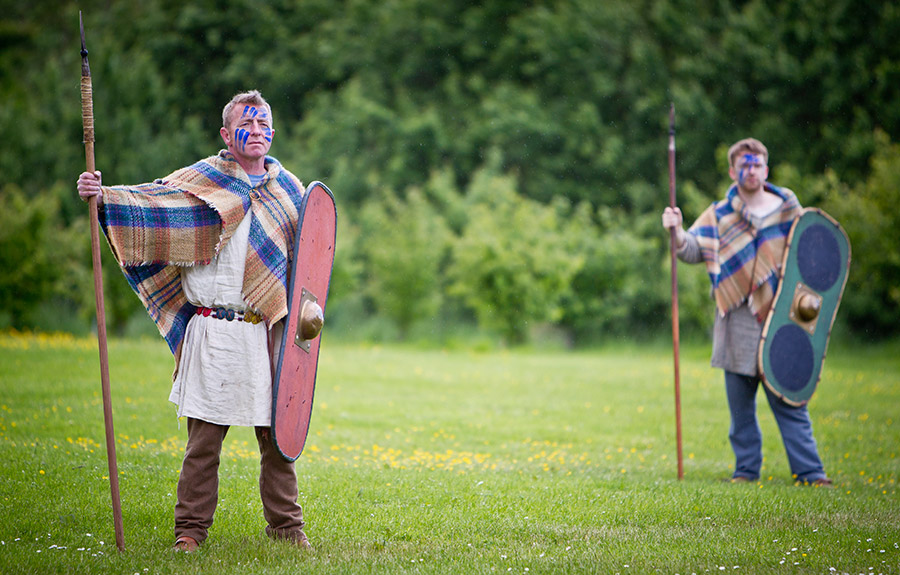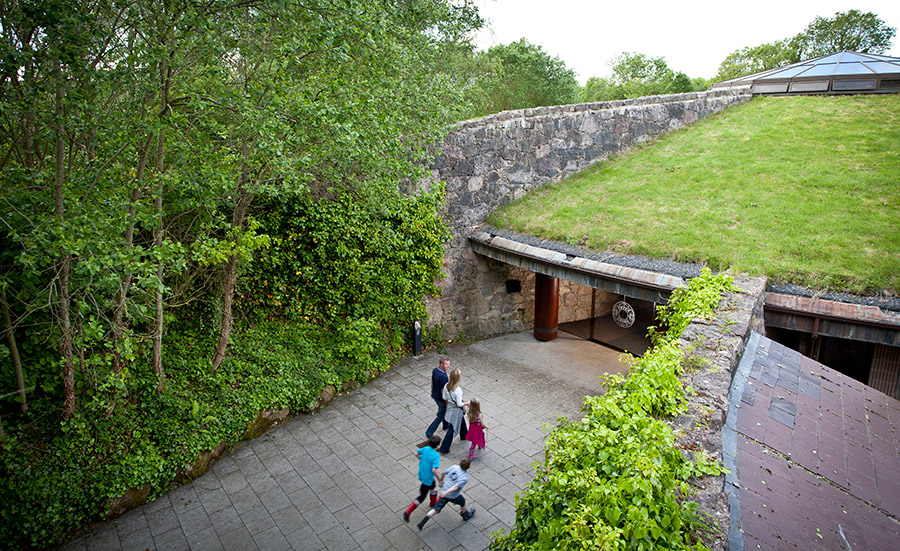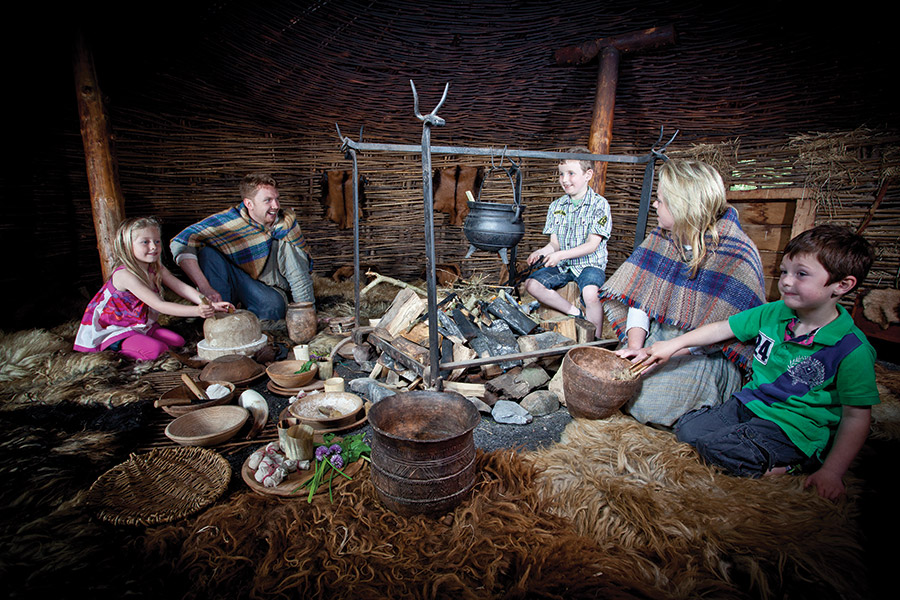I’ve always wondered what it was like to live in the days of our ancestors. Around the time of the great Irish legends, when the kings and queens of Ulster were around. Now I know!
When we got to the Navan Fort we were met by a Celt from the Iron Age called Finn. He explained that we were about to travel back to 65AD where we would enter a totally different world. There would be no electricity, no toilets or baths or any of the comforts we were used to. This would be exactly how people lived, here in Emain Macha, at that time.



